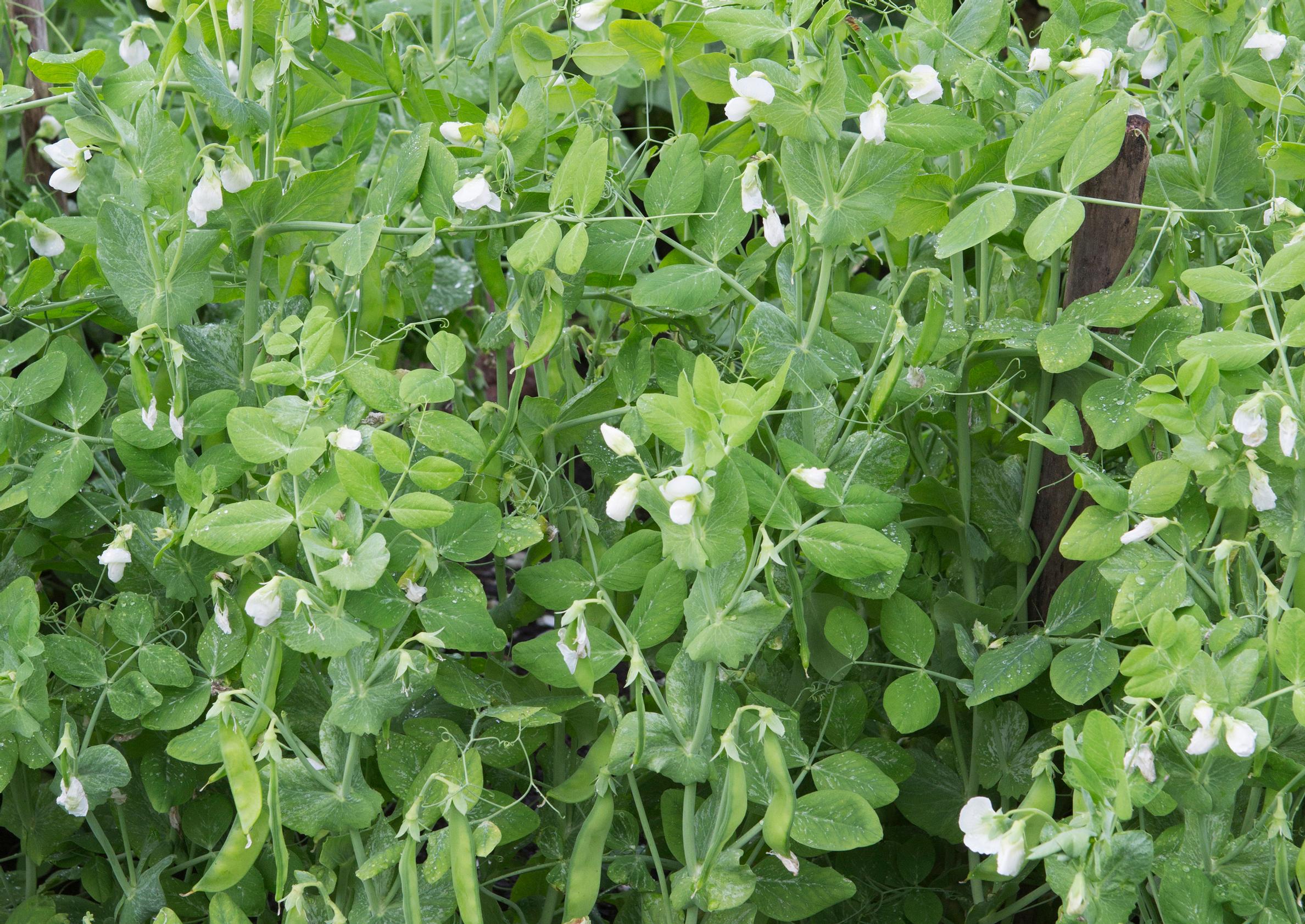
Peas are a classic summer garden treat—Tips for growing, care, and varieties
Peas thrive in a sunny location in loose soil. This versatile plant produces delicious peas and shoots—and invigorates the soil with extra growing power.
Pea seeds are hardy, and they can sprout in soil as cold as +2°C, provided it’s loose and sufficiently moist. That is why peas have adapted well to northern climates. On the other hand, the ideal temperature range for pea cultivation is 20–25°C. A prolonged heatwave will reduce the yield, but a hardened plant can also tolerate temperatures under zero degrees Celsius.
Pea plants bind nitrogen into the soil, with the amount peaking at the end of flowering and while the pods are developing. If you leave the pea root system in place, the nitrogen collected by the Rhizobium bacteria will benefit the next crop.
How to grow peas successfully
The best growing location for peas
For the best harvest, pick a sunny spot. The soil should be fairly nutrient-rich and loose, with a pH of 6–7.
Growing peas in a pot
Germinate the seeds in a warm spot, then move the pot outside once they have sprouted. A low pea variety will grow well when planted in 20–30 centimeters of soil, while a tall variety needs a roomy container. You’ll get the biggest harvest from peas that can be eaten with their pods. You can also grow pea shoots outdoors.
Sowing peas
Sow peas in May–June, placing each seed about 4 cm deep and spaced 2–5 cm apart. While peas can germinate at just a few degrees Celsius, they sprout much faster at 10–15°C.
Protecting peas
Cover the seeds with fleece to speed up germination and protect them from birds.
Supporting tall peas
Supporting medium and tall varieties is vital. Support your peas with stakes or a trellis when the plants are still seedlings.
Watering and fertilizing
Consistent watering is crucial during early growth and while the pods develop. Drought and insufficient nitrogen will cause the plants to yellow prematurely. If needed, use a mild fertilizer during the summer.
Pea pests
The pea moth caterpillar feeds on the seeds, but early sowing helps minimize damage. Rotating the growing area, avoiding overly dense stands, and using well-draining soil are the best ways to prevent fungal diseases.
Harvesting
Harvest times range from July to September. Consult the seed packet for the ideal maturity stage. Overgrown seeds turn woody and lose their sweetness. Use your harvest quickly or cool it in cold water.
Delicious pea varieties
With so many pea varieties available, it’s easy to feel overwhelmed. You can eat some garden peas with the pod and all, while other varieties are used only for their seeds. If you’ve lost your seed packet or the varieties have been mixed up, pick a pod for a quick test. A tough inner membrane means it is a shelling pea, and you only eat the plump seeds. If the pod snaps crisply between your teeth, it’s a snow or snap pea. Snap peas are particularly juicy, and they’re at their best when the seeds inside are still flat and underdeveloped.
Edible-pod peas
- ‘Sugar Snap’: A high-yielding variety that can reach about two meters in height, with a growing time of around 70 days.
- ‘Golden Sweet’: Produces sweet, yellow pods and grows tall.
- ‘Oregon Sugar Pod’: An abundant, juicy variety with a long harvest window.
- ‘Norli’: A high-yielding, early, and low variety that produces dark green pods. Reaches around 60 cm in height.
- ‘Gigante Svizzero’: An older variety with red flowers. Pods are sweet and thick-walled.
- ‘Sugar Bon’: Popular, flavorful, and productive. Also suitable for container growing. Growing time around 56 days.
- ‘Delikett’: A productive variety for using fresh and freezing.
- ‘Sugar Lord’: A variety with sweet, crunchy pods.
- ‘Tom Thumb’: An old variety that grows only about 20 centimeters tall.
Shelling peas
- ‘Kelvedon Wonder’: A well-known, high-yielding variety that grows fairly low.
- ‘Early Onward’: An older, large-podded variety with a growing time of about 80 days.
- ‘Karina’: A prolific, early variety that delivers a long-lasting harvest.
- ‘Kleine Rheinländerin’: An old, well-known, early variety with plump pods. It doesn’t need support.
- ‘Douce Provencet’: A hardy, fast-growing variety for early sowing and northern climates.
- ‘Meteor’: Well-suited for early harvests and northern climates.


